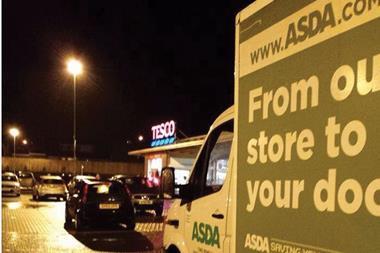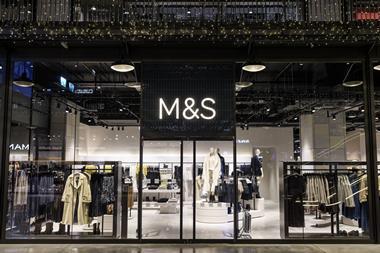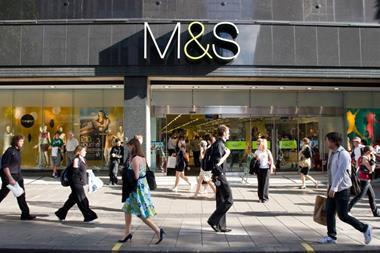Tesco yesterday hosted investors and analysts to outline how it will accelerate its strategy to turnaround its UK arm. Retail Week rounds up the reaction.
“Tesco has failed to adapt to the change in competition from space race to distinct-offer competition. By raising prices faster than anybody else, Tesco has lost its differentiation, giving a free ride to the targeted retailers at both ends of the spectrum (value and quality). The current strategy is vague and does not address the problems of a lack of differentiation, and internationally it remains overly centralised.” – Bruno Monteyne, Bernstein Research
“Management states that the last couple of years have been fruitful in building a firm base from which the Tesco brand can now go forward. We’re not absolutely convinced that this is the case. 35% of the chain has been refitted in the last two years. In this period, Everyday Value, Finest and Healthy Living have all been relaunched, and Price Promise has improved customer perceptions using any metric you choose. Customers are noticing the better service levels too.
“Despite all this good news, like-for-likes remain profoundly negative, despite Tesco having the biggest online and c-store presences in the sector. To us, the evidence is that whilst Tesco is taking action to right the problems, it is not taking sufficiently severe measures. We saw little in the presentation yesterday to suggest the required oomph was about to be applied to the brand’s offer and its delivery.” – Oriel Securities, Jonathan Pritchard
“The decline of large stores means Tesco must develop a compelling offer to ensure that it wins share of a declining large store market. Ultimately a compelling offer is the only way to win. Large stores are out of favour with consumers, so Tesco, with its disproportionate weighting towards large stores, must work harder than most to offset the disadvantage of its out of town/large store locations (locations which for decades were a strength). Tesco must also win share in the emerging channels of internet and convenience.
“But all this suggests that Tesco and the industry generally must become a lower margin industry, as investment is required to protect old channels and new channels are less profitable. Discounters are driving margins down, while the internet drives costs up.” – David McCarthy, HSBC
“We must blend the current worries we have on recent trading with the plan that management has set out. We welcome the further reduction in capital expenditure and the focus upon making the substantial UK estate more productive. However, we are uncertain as to the outcome of plans that to date have represented considerable foundation work but falling like-for-like sales, a loss of market share and a drip, drip of downgrades. Hence, we deem it wise to await output from these enhanced plans rather than to factor in an assumption of success.
“More broadly at a group level, Tesco has still to stabilise its business in Central Europe and emerge from what are admittedly largely external challenges in Asia. Furthermore, we look forward with interest as to how the Bank’s P&L will evolve as and when current accounts are introduced.” – Clive Black, Shore Capital
“The big question ahead of yesterday’s Tesco UK strategy presentation was whether management would re-set the UK operating margin target. And the answer is that they did, but they wouldn’t say what it will be… The dour chief financial officer Laurie Mcllwee lamented the problems of forecasting in this uncertain world and the ever-optimistic chief executive Phil Clarke scoffed breezily at “false precision” and said, helpfully, that “the margin will be what the margin will be”.
“The impression given was that UK profits are set to come under some more pressure in the short term, but nobody seemed too concerned about the scale of the price cuts launched on Monday on essential lines like produce or with the Clubcard-linked promotion on petrol, whilst the limited response of the share price told its own story.” – Nick Bubb, independent


























No comments yet